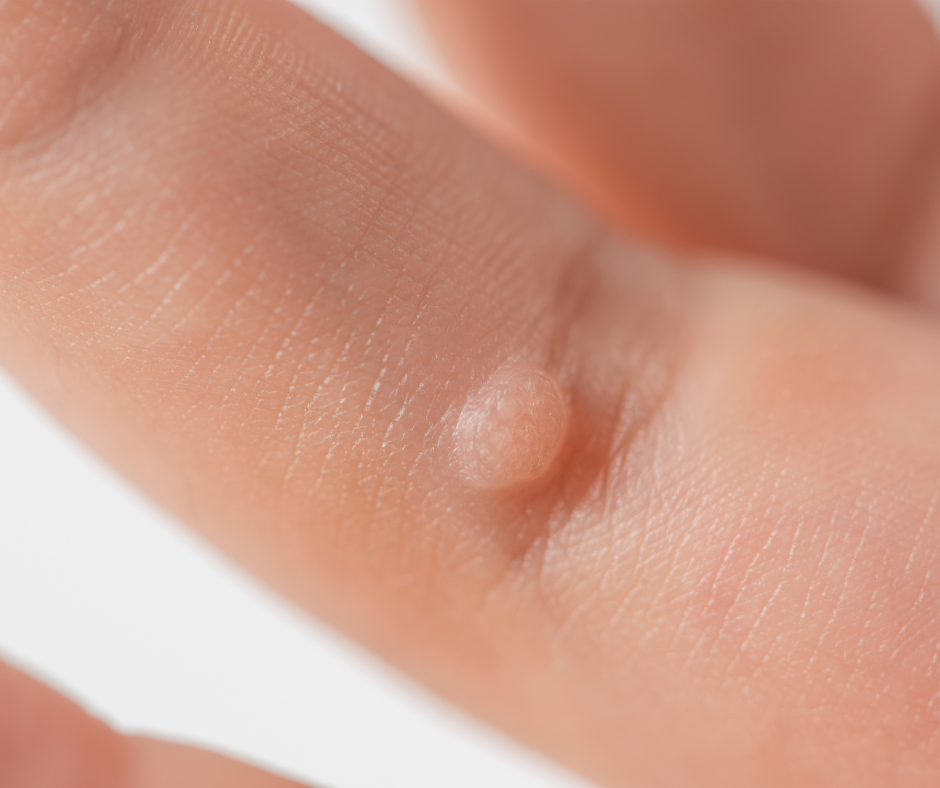
WARTS
Warts are benign skin growths resulting from a viral infection in the top skin layer, caused by the human papillomavirus (HPV). They typically appear skin-colored and rough to the touch, though they can also be dark, flat, and smooth, depending on their location. Different types of warts include:
- Common Warts: Found on fingers, around nails, and backs of hands. Often called "seed" warts due to black dots resembling seeds.
- Foot Warts: Known as plantar warts, located on the soles of feet. When in clusters, they are called mosaic warts. They are usually flat from pressure while walking and can be painful.
- Flat Warts: Smaller and smoother, often appearing in large numbers. Common on the face in children, and in the beard area for men, and on the legs for women. Shaving may cause irritation leading to their appearance.
Treatments For Warts
Cryosurgery is a common method employed by dermatologists to address various skin issues. It involves applying liquid nitrogen to the skin area, causing it to freeze. Different levels of freezing lead to peeling with light freezing, blistering with moderate freezing, and scabbing with hard freezing.
The primary applications of cryosurgery include treating warts, seborrheic keratoses, and actinic keratoses. Additionally, it is used for small benign growths and certain types of skin cancers.
Warts can be treated with a variety of topical therapies that work in different ways. They can work by peeling away the abnormal skin cells, by attacking and killing the infected cells directly, by causing the skin to blister under the wart which can result in removal of the wart, or by stimulating your own immune system to clear the wart.
Certain medicines can also be injected directly into the wart. These include medicines that kill the abnormal skin cells, as well as those that improve the ability of your body’s own immune system to destroy the wart.
